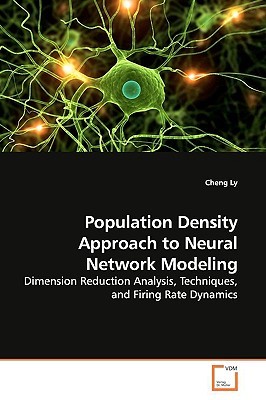
- We will send in 10–14 business days.
- Author: Cheng Li
- Publisher: VDM Verlag
- ISBN-10: 3639157532
- ISBN-13: 9783639157536
- Format: 15.2 x 22.9 x 0.9 cm, minkšti viršeliai
- Language: English
- SAVE -10% with code: EXTRA
Reviews
Description
Population Density Methods (PDM) have gained prominence in recent years in Theoretical Neuroscience as an analytical and time-saving computational tool. The method involves solving a density equation (aka, Fokker-Planck) instead of simulating many individual neurons. Simplifying assumptions of the underlying neuron model are often made so that the resulting PDM equations have low dimension for tractability. Thus, dimension reduction techniques are vital for physiological modeling. An introduction to PDM and the relevant issues are discussed in Chapter 2. A 'moment closure' dimension reduction technique is analyzed in Chapter 3. We show the equations are ill-posed in the fluctuation-driven regime with realistic parameters despite several contrary reports in the literature. The dimension reduction method is even worse for the more physiological 'theta' model (Chapter 4). A robust and accurate alternative reduction technique using a moving eigenvector basis is developed and implemented in Chapter 5. The stochastic firing rate dynamics of various neural models are analyzed in Chapter 6 with the tools we have developed.
EXTRA 10 % discount with code: EXTRA
The promotion ends in 23d.13:28:03
The discount code is valid when purchasing from 10 €. Discounts do not stack.
- Author: Cheng Li
- Publisher: VDM Verlag
- ISBN-10: 3639157532
- ISBN-13: 9783639157536
- Format: 15.2 x 22.9 x 0.9 cm, minkšti viršeliai
- Language: English English
Population Density Methods (PDM) have gained prominence in recent years in Theoretical Neuroscience as an analytical and time-saving computational tool. The method involves solving a density equation (aka, Fokker-Planck) instead of simulating many individual neurons. Simplifying assumptions of the underlying neuron model are often made so that the resulting PDM equations have low dimension for tractability. Thus, dimension reduction techniques are vital for physiological modeling. An introduction to PDM and the relevant issues are discussed in Chapter 2. A 'moment closure' dimension reduction technique is analyzed in Chapter 3. We show the equations are ill-posed in the fluctuation-driven regime with realistic parameters despite several contrary reports in the literature. The dimension reduction method is even worse for the more physiological 'theta' model (Chapter 4). A robust and accurate alternative reduction technique using a moving eigenvector basis is developed and implemented in Chapter 5. The stochastic firing rate dynamics of various neural models are analyzed in Chapter 6 with the tools we have developed.


Reviews